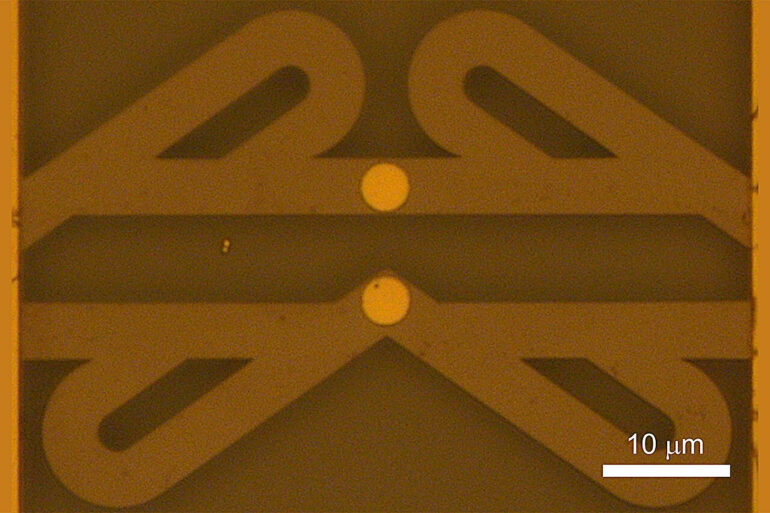Researchers from the Institute of Industrial Science, The University of Tokyo, have developed a method to control the direction of heat flow in crystals. This miniature device could eventually be used to create advanced thermal-management systems in electronic devices to prevent overheating.
Unwanted heating of electronic components hinders the performance of many devices. For example, the processing speed and memory available to silicon-based computer chips depend strongly on the ability to dissipate heat effectively. Unfortunately, despite high demand, thermal management remains challenging.
In their study published in Nature, the research team demonstrates the ability to control heat transfer in graphite crystals. Their novel approach applies concepts from fluid dynamics to phonons in solid-state crystals. The article is titled “A graphite thermal Tesla valve driven by hydrodynamic phonon transport.”
Phonons are “quasiparticles,” characterized by the collective vibration of atoms or molecules in condensed matter. Crystals consist of repeating patterns of atoms, arranged uniformly throughout the material.
“Bonds in a crystal act like springs when atoms become excited—for example, by heating. These ‘springs’ then act in unison, forming a wave, or phonon, that travels through the crystal,” explains Xin Huang, lead author of the study.
Interestingly, one way that phonons can travel through solid-state crystals bears a striking resemblance to the flow of fluids, in a phenomenon known as “hydrodynamic phonon transport.” Huang and collaborators have exploited this effect to realize thermal rectification in graphite.
They fabricated structures inspired by Tesla valves, originally designed by Nikola Tesla in the 1920s. Tesla’s “valvular conduit” can force fluids to flow more quickly in one direction than another. This concept can also be applied to thermal flow via phonons in a crystal, allowing the heat to be dissipated more evenly.
The thermal conductivity of the Tesla valve—which describes the ability of a material to conduct heat—was measured across a range of temperatures, from 10 K to 300 K. Its asymmetric design allows unhindered hydrodynamic phonon transport in the forward direction and resists the flow in the reverse direction. The efficiency of rectification, or “diodicity,” is given by the ratio of thermal conductivity between the forward and reverse directions.
At low temperatures of 10 K, the diodicity had a value of 1. As the temperature increased, this parameter reached a maximum value of 1.15 (at 45 K), indicating a more efficient flow of heat in the forward direction. This effect was evident up to 60 K, but the effects of phonon scattering at higher temperatures caused the thermal conductivity to equalize in both directions.
The exploitation of this effect is currently limited both to the low-temperature regime and to materials that exhibit hydrodynamic phonon transport (which excludes silicon).
“What’s exciting, though, is that theoretically there are no barriers to achieving thermal rectification across a wider temperature range, even reaching room temperature,” says Masahiro Nomura, senior author.
Beyond this basic research in condensed matter physics, this phenomenon could eventually be applied to wide range of devices, enabling manufacturers to develop advanced thermal-management systems to optimize the performance of electronic components such as smartphones, computers, and LEDs.
More information:
Masahiro Nomura, A graphite thermal Tesla valve driven by hydrodynamic phonon transport, Nature (2024). DOI: 10.1038/s41586-024-08052-1. www.nature.com/articles/s41586-024-08052-1
Provided by
University of Tokyo
Citation:
Tesla-inspired method can control the direction of heat flow in graphite crystals (2024, October 16)



